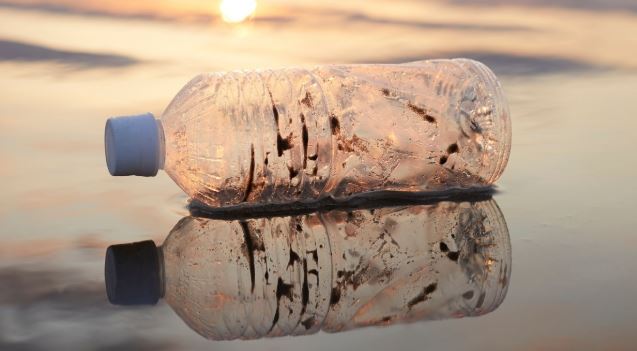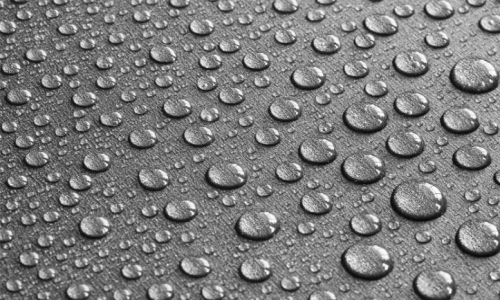


 12:30:16
12:30:16  2025-11-10
2025-11-10  29
29

Think of ocean plastic and you may picture bottles and bags bobbing on the waves, slowly drifting out to sea. Yet the reality is more complex and far more persistent.
Even if we stopped all plastic pollution today, our new research shows that fragments of buoyant plastic would continue to pollute the ocean's surface for more than a century.
These fragments break down slowly, releasing microplastics that sink through the water column at a glacial pace. The result is a "natural conveyor belt" of pollution that links the surface to the deep sea.
Our new study set out to understand what happens to large pieces of floating plastic once they enter the ocean. We developed a computer model to simulate how these plastics degrade, fragment, and interact with the sticky suspended particles known as "marine snow," which help transport matter to the seafloor.
Marine snow is the ocean's natural snowfall: tiny, sticky flakes of dead plankton and other organic particles that clump together and slowly sink, carrying anything that sticks, like microplastics, down into the deep.
The new model builds on our previous work understanding the long-term fate of microplastics smaller than 1mm, which showed that plastics would only interact with suspended fine organic particles once they had broken down and reached a critical size threshold. But that simple one-dimensional model didn't consider other physical processes, such as ocean currents.
By linking plastic degradation to ocean processes including marine snow settling, we have now provided a more complete picture of how small plastic particles move through the ocean system and why some floating plastic appears to vanish from the surface.
The 'missing plastic' problem
When large plastics such as food wrappers or fragments of fishing gear reach the ocean, they can remain afloat for years, slowly battered by sunlight and waves and colonised by marine biofilm – microbial communities that live on the plastic surface.
Over time, they break into smaller and smaller pieces, eventually becoming small enough to attach to marine snow and sink. But this is a slow transformation. After 100 years, around 10% of the original material can still be found at the ocean's surface.
As for the rest, scientists have long noticed a puzzling mismatch between the amount of plastic entering the ocean and the much smaller quantities found floating at the surface.
Floating plastics must be removed from the ocean's surface layer through degradation and sinking, but so far, the numbers have not quite added up. Our findings help explain this "missing plastic" problem.
We are not the first scientists to report the sinking of microplastics. But by combining experimental work on how microplastics associate with fine suspended sediments, with our modelling of plastic degradation and marine snow settling processes, we provide realistic estimates of how microplastics are removed from the ocean surface which account for the missing plastic.
The ocean's natural biological pump, often described as a conveyor belt, moves carbon and nutrients from the surface to the deep sea. Our research suggests this same process also moves plastics.
However, there is a potential cost. As global plastic production continues to rise, the biological pump could become overloaded. If too many microplastics attach to marine snow, they may interfere with how efficiently the ocean stores carbon – an effect that could have consequences for marine ecosystems and even climate regulation.
A conveyor belt for pollution
Microplastic pollution is not a short-term problem. Even if we achieved zero plastic waste today, the ocean's surface would remain contaminated for decades.
To tackle the problem effectively, we need long-term thinking, not just beach or ocean cleanups. Policies need to address plastic production, use, and disposal at every stage. Understanding how plastic moves through the ocean system is a crucial step towards that goal.
Large, buoyant plastic items degrade over decades, shedding microplastics as they go. These tiny fragments may eventually sink to the ocean floor, but only after going through multiple cycles of attachment and release from marine snow, a process that can take generations.
This means plastics lost at sea decades ago are still breaking down today, creating a persistent source of new microplastics.
The ocean connects everything: what floats today will one day sink, fragment, and reappear in new forms. Our task is to make sure that what we leave behind is less damaging than what we have already set adrift.
Reality Of Islam |
|

Cameras hav

For years,

New scienti

This is the
 9:3:43
9:3:43
 2018-11-05
2018-11-05
10 benefits of Marriage in Islam
 7:5:22
7:5:22
 2019-04-08
2019-04-08
benefits of reciting surat yunus, hud &
 9:45:7
9:45:7
 2018-12-24
2018-12-24
advantages & disadvantages of divorce
 11:35:12
11:35:12
 2018-06-10
2018-06-10
 6:0:51
6:0:51
 2018-10-16
2018-10-16
 8:3:0
8:3:0
 2018-06-21
2018-06-21
 6:14:17
6:14:17
 2018-06-21
2018-06-21
al-hussain (peace be upon him)
 10:18:1
10:18:1
 2022-09-21
2022-09-21
 12:10:56
12:10:56
 2022-11-17
2022-11-17
 6:14:3
6:14:3
 2023-01-18
2023-01-18
 12:47:1
12:47:1
 2022-12-20
2022-12-20
 7:0:55
7:0:55
 2022-05-17
2022-05-17
 5:41:46
5:41:46
 2023-03-18
2023-03-18
| LATEST |